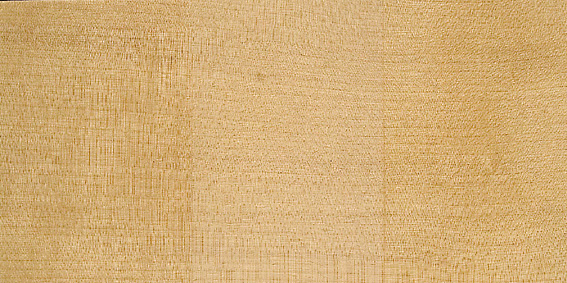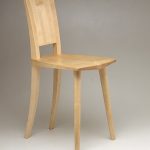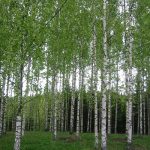
- Vårtbjörk (S)
- Silverbirch (GB)
- Hängebirke (D)
- Le bouleau (F)
The white-bark silver birch is considered the national tree of Finland.
Distribution
- Silver birch grows almost throughout Europe.
- As a pioneer tree species, silver birch has spread almost everywhere in Finland. There it grows as far north as Kittilä.
- Curly birch (B. pendula var. carelica) is the most valuable tree growing in Finland. This special form of silver birch grows wild in North-Europe.
Habitat
- Silver birch thrives best in soils which are dry, fresh or which have a high mineral content and streaming ground water.
- Curly birch, flame birch and different lobe leaf species are variants of silver birch.
- Flame birch can be indentified because of its wavy and strong bark at the lower part of its stem. However, flame birch is relatively rare.
- It withstands air pollution well, but on the other hand it requires a lot of daylight and water.
- Birch survives storms, because it has a thick and gnarled main root which is very extensive.
- Birch also has qualities that heal the soil.
Growth characteristics
- Silver birch has a single trunk that can grow as high as 30 meters.
- The trunk is covered by birch bark, and the lower stem by dark cortex.
- The best quality birch grows in nutritious soils that have a high mineral content.
- Straight birches with brancless trunks grow in mixed forests.
- In order to keep the wood free of rot, birches must be felled when they are full-grown but relatively young.
- Quality birch timber is straight, free of knots and at least 25 cm in diameter at chest height. The surface of the trunk has to be smooth, and it cannot have cracks caused by frost nor rot in the lower stem.
Properties of the wood
- The wood of silver birch is light in colour and the grain pattern is barely distinguishable.
- The colour of the heartwood is not different from the sapwood.
- The wood is fairly hard and flexible.
- Birch requires a thorough drying process because it weathers easily. Quick drying also causes the colour to darken.
- It does not withstand humidity well.
- Birch is easy to work. It is homogenous and easy to chip and polish.
- It also has good surface finishing and dyeing properties.
- The brown, irregular tracies in birch wood, left by the maggot of a fly, are often mistaken for curly grained wood.
- The structure of the tissue of flame birch is otherwise normal, but the direction of the grains varies wave-like in line with the radius and the tangent.
- The weight of air-dry sawn timber is 630- 670 kg/m3.
- A-class birch is straight and free of knots and rot. To be suitable for carpentry the wood has to be even in colour. It is used for furniture, parquets, musical instruments, decorative items, utility articles, plywood and veneering.
- B-class birch can have a few knots, hard rot in the heartwood and somevariation in colour. It is used for the same purposes as A-class birch.
- C-class wood is used in hidden structures and painted products. Hence, it does not have special requirements.

Surface treatment
The wood samples have been surface treated as such:
- Left, water-based acrylic lacquer
- Center, no treatment
- Right, two component catalystlacquer or oil

Flame birch, radial cut

Radial cut

Tangential cut
Usage
- Birch wood is used for furniture, plywood production, turneries and paper production. It also provides xylitol.
- It is used for interior decoration, parquets and sports equipment.
- Due to its challenging working properties, flame birch is used mainly as veneering in the furniture industry.
- Both Finnish birch species are suitable for drawing sap in the spring.
- Earlier, in the 18th and 19th centuries, potash was burned out of birches. It was used for dyeing, making glass and as a detergent.
- Birch bark has been used for bushels, containers, shoes, horns and as insulator material in houses.






